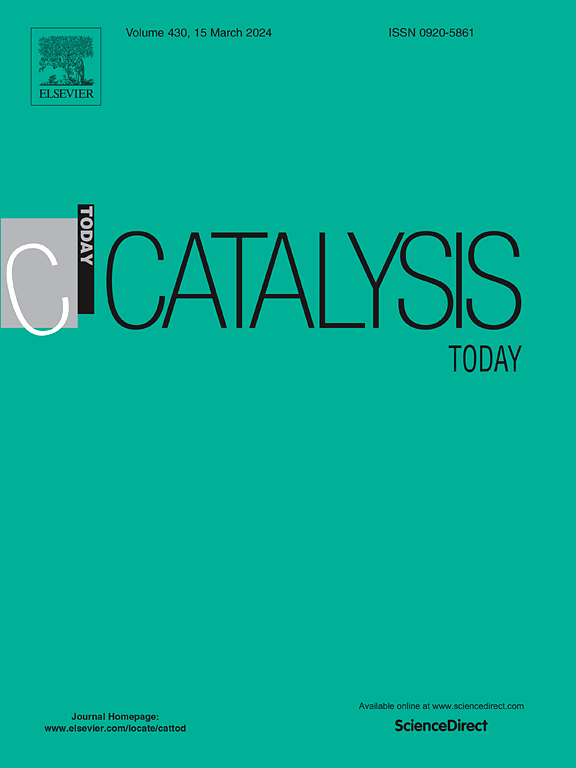Endogenous base phosphine/dimethyl carbonate catalyzed depolymerization of poly(ethylene terephthalate)
IF 5.2
2区 化学
Q1 CHEMISTRY, APPLIED
引用次数: 0
Abstract
Solvolysis of postconsumer poly(ethylene terephthalate) (PET) into monomeric feedstocks that can be recycled contributes value-added strategy to waste plastic management. Chemical route for PET recycling with sets of diols, diamines, and amino alcohols as the solvolytic reagents by endogenous basic ionic pair phosphonium organocatalyst was established. Methylation of tertiary phosphine with dimethyl carbonate produced quaternary phosphonium methyl carbonate (QPMC) catalyst of strong basic character. QPMC depolymerized PET by virtually complete conversion with 78 % up isolated yield of monomers under optimal reaction conditions of 160 °C, 2 mol% catalyst loading, and 4 h. Catalytic solvolysis mechanism with ethylene glycol was probed by NMR titrations where methyl carbonate anion coordinated to hydroxyl of ethylene glycol by H-bonding, rather than H-abstraction by the basic methyl carbonate anion, was validated.
内源性碱膦/碳酸二甲酯催化聚对苯二甲酸乙酯解聚
将消费后的聚对苯二甲酸乙酯(PET)溶解成可回收的单体原料,有助于废塑料管理的增值战略。建立了内源性碱性离子对磷有机催化剂以二醇、二胺和氨基醇为溶剂解剂回收PET的化学路线。叔膦与碳酸二甲酯甲基化反应制备了强碱性碳酸甲基季磷催化剂。QPMC在160°C、2 mol%催化剂负载和4 h的最佳反应条件下,几乎完全转化PET,分离单体产率提高78 %。通过核磁共振(NMR)滴定,验证了碳酸甲酯阴离子通过氢键配位到乙二醇羟基上,而不是被碱式碳酸甲酯阴离子吸氢。
本文章由计算机程序翻译,如有差异,请以英文原文为准。
求助全文
约1分钟内获得全文
求助全文
来源期刊

Catalysis Today
化学-工程:化工
CiteScore
11.50
自引率
3.80%
发文量
573
审稿时长
2.9 months
期刊介绍:
Catalysis Today focuses on the rapid publication of original invited papers devoted to currently important topics in catalysis and related subjects. The journal only publishes special issues (Proposing a Catalysis Today Special Issue), each of which is supervised by Guest Editors who recruit individual papers and oversee the peer review process. Catalysis Today offers researchers in the field of catalysis in-depth overviews of topical issues.
Both fundamental and applied aspects of catalysis are covered. Subjects such as catalysis of immobilized organometallic and biocatalytic systems are welcome. Subjects related to catalysis such as experimental techniques, adsorption, process technology, synthesis, in situ characterization, computational, theoretical modeling, imaging and others are included if there is a clear relationship to catalysis.
 求助内容:
求助内容: 应助结果提醒方式:
应助结果提醒方式:


